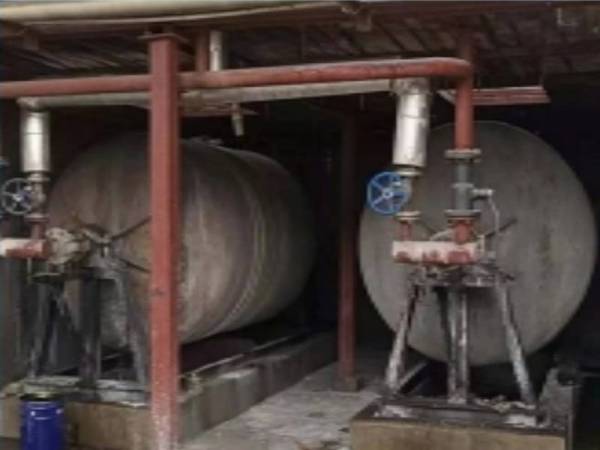

Company News
Exploration of Circular Economy Model for Sulfuric Acid White Carbon Black Enterprises
Time:2024-07-22View:263
In the 21st century, white carbon black plays a crucial role. Let's follow Hunan white carbon black expert Tian Sheng to take a look!
The appearance of precipitated white carbon black is white powder, insoluble in water and acid, soluble in strong alkali and hydrofluoric acid, with excellent characteristics such as porosity, large internal surface area, high dispersibility, light weight, good chemical stability, high temperature resistance, non combustion, non-toxic and odorless, and good electrical insulation. As a reinforcing filler in the rubber industry, it is mainly used for shoes, tires, and other light colored rubber products. It can be used as a carrier or flow agent in industries such as pesticides and feed, as a friction agent in toothpaste, and as a dispersant, anti settling agent, or matting agent in the coating industry. There are two traditional methods for producing white carbon black; Gas phase method (combustion of organic silicon) and precipitation method (acid and silicate reaction). The former has relatively better product quality and fewer impurities, but the raw materials are not easy to obtain and the production cost is high; The raw materials used in the precipitation method are cheap, easy to obtain, easy to operate, simple in equipment, and the technology is relatively mature. At present, it has a significant competitive advantage and therefore occupies a dominant position in the market. However, the sulfuric acid method belongs to a high energy consumption and high emission industry. On average, for every 1 ton of white carbon black produced, 3.8 tons of sodium silicate (with a ratio of 3.2), 0.6 tons of sulfuric acid (98%), 400 kW · h of electricity, 0.8 tons of coal, and 50 tons of water are required. Therefore, implementing reduction, reuse, and resource utilization in the production process of sulfuric acid white carbon black is one of the important means to optimize the development of the white carbon black industry and protect the environment. The author analyzed the production process of the existing white carbon black industry and proposed a method for implementing a circular economy model in the white carbon black industry.
At present, the research on carbonized white carbon black in China has just begun, and many technical details have not yet been finalized. Many enterprises, institutions, and universities in China have conducted in-depth research on the preparation of white carbon black from carbon dioxide and sodium silicate alkali, mainly focusing on the carbonization process conditions (sodium silicate ratio and density of sodium silicate alkali, reaction temperature, ventilation rate, etc.) and their kinetics. Of course, the combination of white carbon black enterprises with chemical plants such as barium carbonate, light calcium carbonate, and magnesium carbonate can also fully utilize carbon resources.
In addition, in the production process of white carbon black, no matter which method is used to produce sodium sulfate, sodium sulfate will be generated by the reaction between the alkali and sulfuric acid. If the sodium salt remaining in the white carbon black is not washed thoroughly, it will affect the rubber during the vulcanization process, thereby affecting the wear resistance and aging resistance of the rubber. Therefore, white carbon black enterprises require a large amount of water to replace residual sodium salts in their products. According to the actual operation of the industry, although production technology and equipment have been improved, the amount of wastewater generated per ton of white carbon black still reaches 30-35 tons, and the mass fraction of sodium sulfate in the wastewater is 2% -2.6%. According to the statistics of the Inorganic Silicides Branch, the production of white carbon black in China in 2015 was 1.8 million tons, which means that 1 to 1.5 million tons of sodium sulfate will be emitted annually. Manufacturers in the white carbon black industry directly discharge these high salt wastewater without treatment, causing serious waste. When a large amount of untreated sulfate containing wastewater is discharged into water, it will acidify the water and harm aquatic organisms; Discharging into farmland will damage the soil structure, cause soil compaction, and affect the yield and quality of crops; When the sulfate concentration in drinking water exceeds 750 mg/L, it can cause mild diarrhea symptoms in humans; When the sulfate concentration in drinking water reaches 1000 mg/L, it can inhibit and weaken gastric juice secretion, reduce gastric acid acidity and pepsin activity, hinder digestion, and thus harm human health. With the tightening of national environmental policies (such as the "Ten Measures for Water Pollution Prevention and Control" in the "Water Pollution Prevention and Control Action Plan"), various white carbon black production enterprises will face the reality of increased production costs due to wastewater treatment. Therefore, the white carbon black industry should strengthen the recycling and resource utilization of sodium sulfate.
At present, various production enterprises of white carbon black need to change their management ideas and concepts, accelerate their innovation pace, combine their own actual situation, rely on the above-mentioned circular economy model, actively adopt advanced technologies, and then select technically, economically, and environmentally feasible circular economy production models. In addition, cooperation and joint production can be established with industries such as barium salts, calcium salts, and aluminum to achieve resource sharing and environmental protection. This is also beneficial for improving resource utilization, reducing the discharge of "three wastes", and achieving harmonious development between enterprises, society, resources, and the environment.
To learn more about white carbon black, you can call Tiansheng New Materials Technology Co., Ltd.

